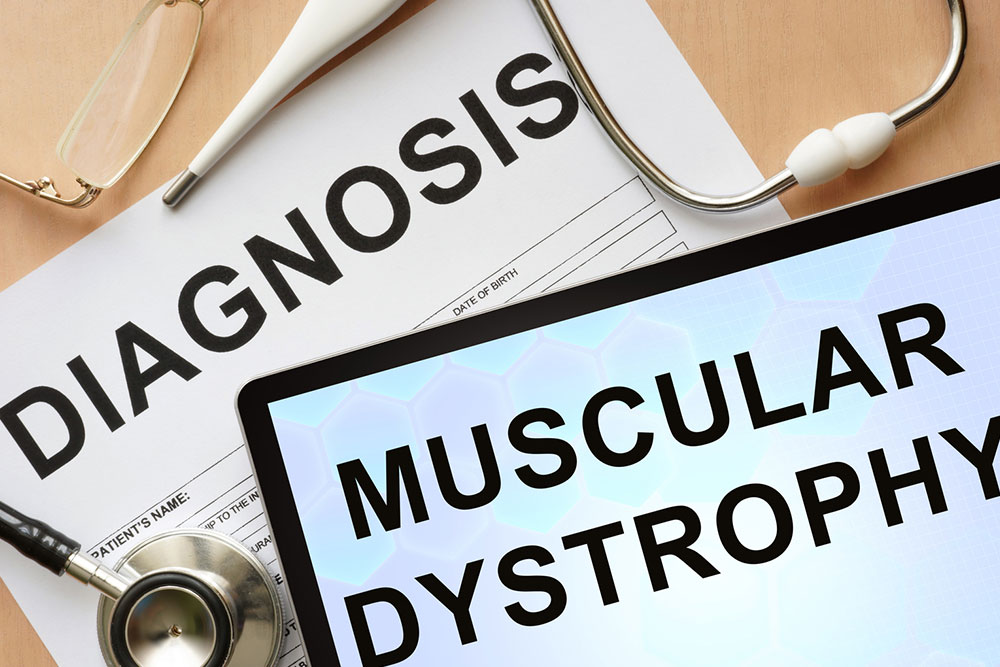
Symptoms, causes, and management for muscular dystrophy
Muscular dystrophy (MD) is a group of over 30 genetic disorders characterized by progressive muscle degeneration and weakness. It poses significant challenges for those affected and their families. Its symptoms may overlap within different MD types. Muscular dystrophy may worsen with time and does not have any definite cures, so timely intervention to manage symptoms is of utmost importance. Here are its causes, symptoms, available treatments, and relief strategies for individuals with this condition.
Types
The types have been categorized based on factors like the age at which an individual begins to show MD symptoms, the extent of muscle weakness, and symptom severity. The most common types include:
- Duchenne muscular dystrophy, which affects toddlers and children.
- Becker muscular dystrophy occurs between the ages of 11 and 25.
- Congenital muscular dystrophy can either be present since birth or surface before the age of 2, and children may struggle to reach developmental milestones.
- Myotonic affects one’s face and neck muscles in the initial stages.
- Congenital is known for its slow progression compared to other types.
- The limb-girdle affects the foot and may occur during the teenage years or childhood.
Symptoms
The symptoms of muscular dystrophy vary depending on the specific type and severity of the condition. Usually, the common symptoms that can be seen across most types of MD include:
- Muscle weakness
- Progressive loss of muscle mass
- Problems with motor skills like walking, running, or cycling, and possibly needing a wheelchair
- Inability to use arms and move shoulders easily
- Gait or walk that seems abnormal
- Respiratory issues
- Joint contractures which cause pain in the joints and limit mobility
- Curved spine, also known as scoliosis
- Inability to swallow food easily
- Malnourishment or nutritional deficiencies
When it comes to certain types of MD, some additional symptoms of Duchenne muscular dystrophy in children may include:
- Falling or being clumsy, especially while running
- Inability to jump or run
- Enlarged calf muscles, buttocks, arms, or shoulders due to fat buildup around the connective tissues
- Frequent respiratory infections
- Bone thinning
- Poor reflexes
Similarly, individuals with Becker muscular dystrophy may show additional signs like:
- Walking on one’s toes
- Inability to get up from a sitting position
Causes
The primary known cause of MD is a defective gene mutation that helps protect muscle fibers. Usually, the risk of MD is higher in individuals who already have an MD case among family or close relatives. Statistics show that males and young boys are more likely to have MD, especially Duchenne.
Treatment options
- Physical therapy: This involves certain exercises that help build muscular strength and flexibility.
- Inflammation treatments: Some oral treatments recommended by a healthcare expert may help reduce inflammation, improve lung function, and delay muscle degeneration.
- Mobility assistance: Doctors may also prescribe certain assistive devices like braces, wheelchairs, and respiratory aids so that the patients can maintain their independence and mobility.
- Heart care: Since MD can lead to heart failure, healthcare professionals may monitor and prescribe cough-assist devices, ventilators, or respirators to improve heart function.
- Surgery: This option is usually recommended for those suffering from severe muscle tension and abnormal spinal curvature.
Relief strategies
Individuals with muscular dystrophy can find relief through a multidisciplinary approach that focuses on improving their quality of life. Emotional and psychological support through support groups and professional counseling can help individuals navigate the challenges associated with muscular dystrophy.



